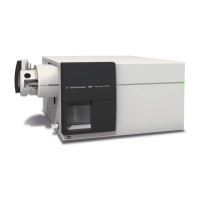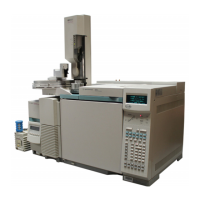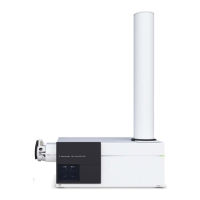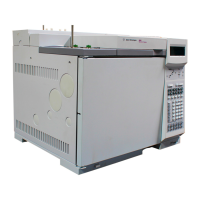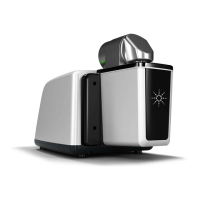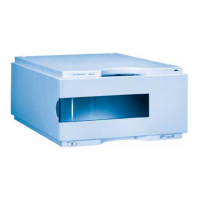16 Agilent 6400 Series Triple Quad LC/MS Concepts Guide
2 Inner Workings – Triple Quadrupole MS versus Single Quadrupole MS
How a single quadrupole mass spectrometer works
• The quadrupole mass analyzer is represented by a moving
belt that serves to filter the ions as they pass through
openings of various sizes. The ions pass from the funnel,
through the filter, to the detector. Although in this image,
ions that are smaller might fit through the openings, a
quadrupole mass analyzer filters the ions so that only the
“correct” ions pass through to the detector.
• The detector is represented by the collecting funnel below
the filtering belt.
As the belt (the analyzer) moves, or the voltages on the rods are
changed, ions with different m/z values are filtered through the
mass spectrometer.
As the analyzer moves from a small m/z value to increasingly
larger values, a full MS scan is created.
SIM – Selected Ion Monitoring If the belt does not move, the detector continues to monitor the
same single m/z value over the entire scan period. This type of
analysis is known as SIM. It is the most sensitive operating
mode for a single quadrupole mass spectrometer.
The scan period is selected (fixed) by the user. The user may set
the dwell time to scan a specific mass range (e.g. m/z 50 to
1000) or to remain on one selected ion (SIM) or to move to
several selected ions during the scan period. The quadrupole
mass filter is not scanned in this mode. The required RF/DC
voltages are often set to filter a single mass at one time.
For comparison, see “How a triple quadrupole mass
spectrometer works" on page 27.
Single quadrupole: SIM
To obtain the best sensitivity or quantitation, the single
quadrupole is operated in SIM mode (Figure 3). The duty cycle
is the measure of the instrument’s time actually devoted to
measuring signals. In SIM mode, the single quadrupole analyzes
the signal of a specific m/z ion almost all of the time. This
results in nearly 100% acquisition during the duty cycle.
